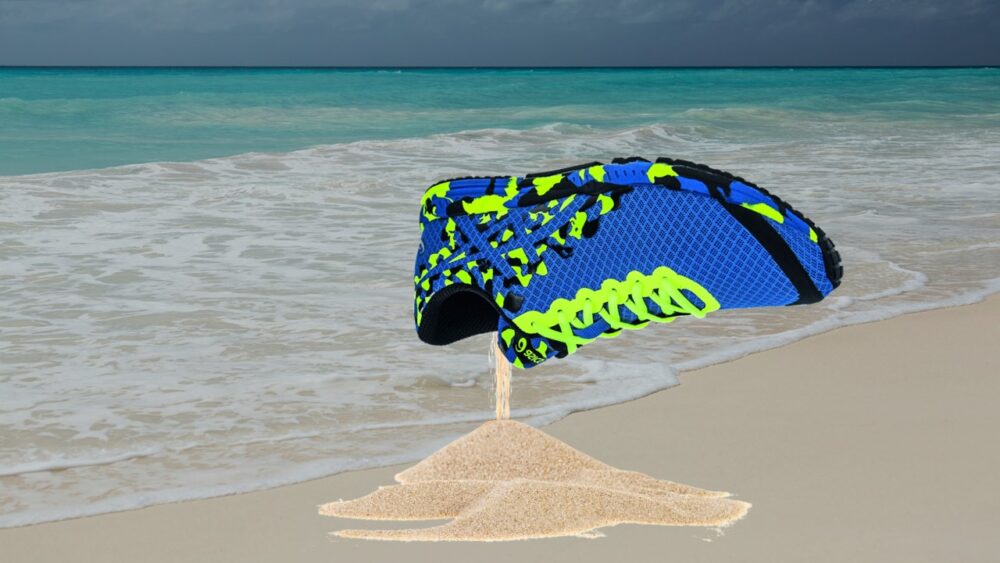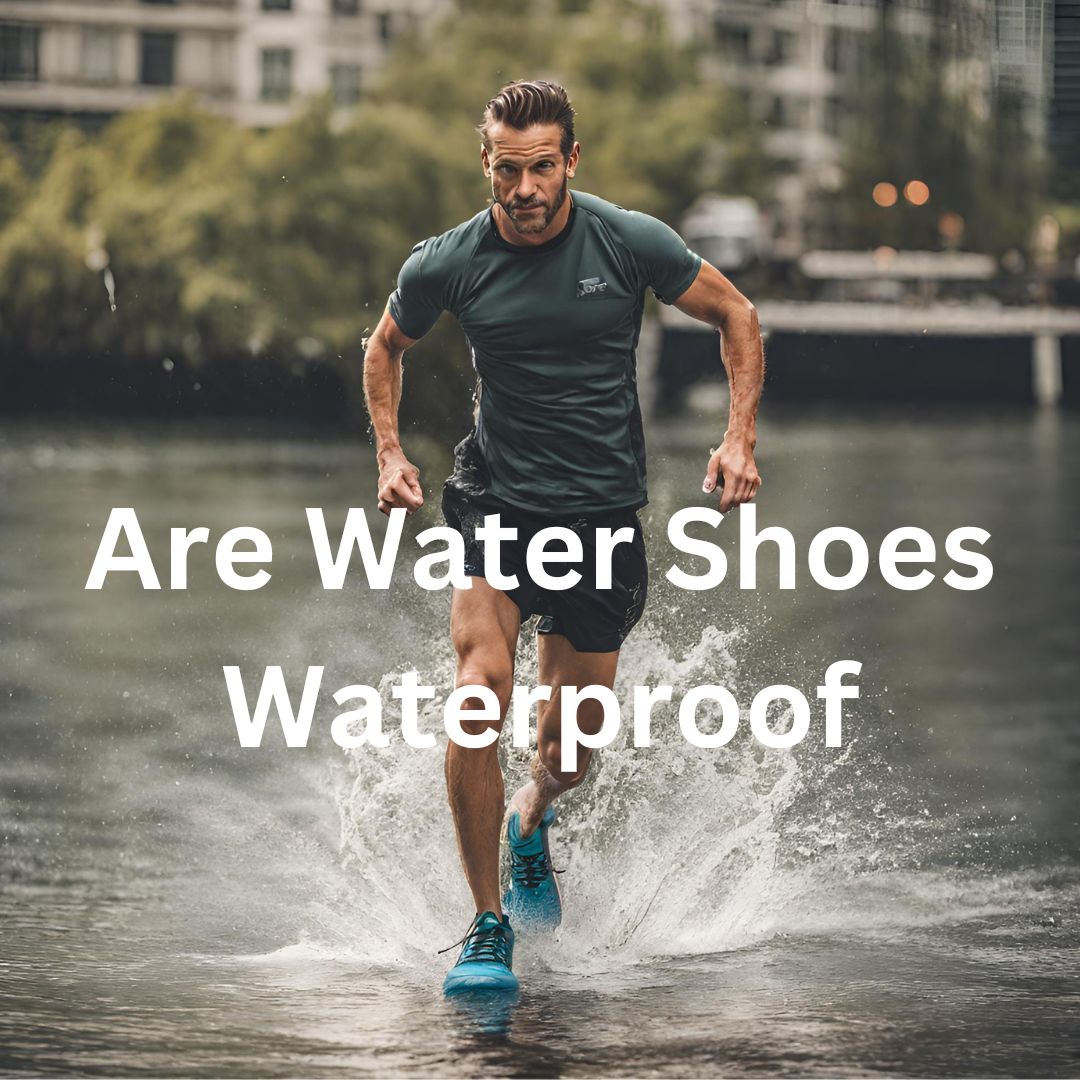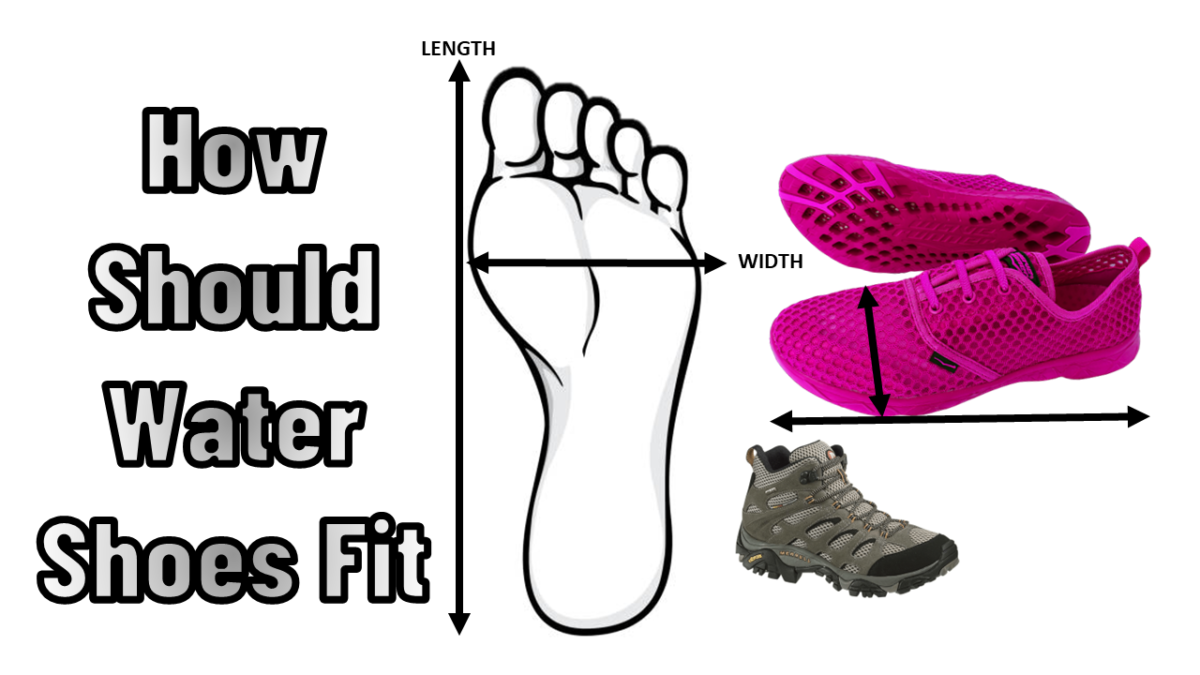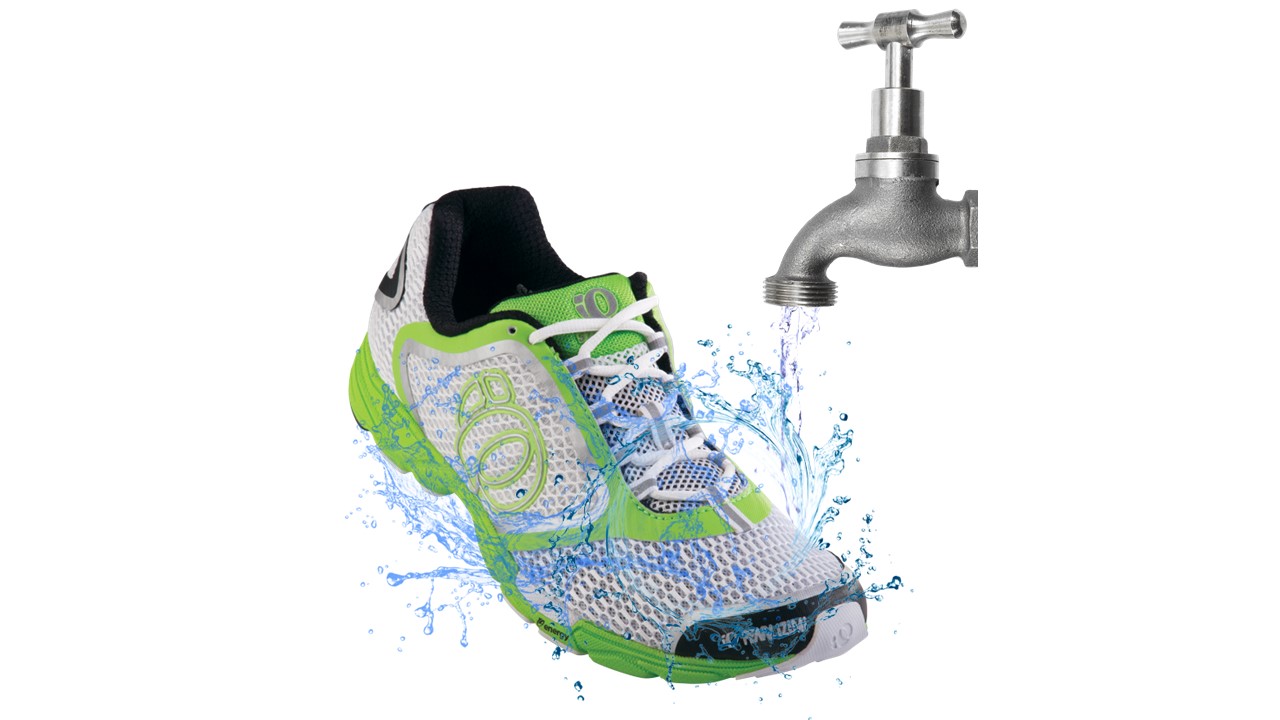Do You Wear Socks With Water Shoes – Unluck The Secret
Do you wear socks with water shoes? Yes, you can wear socks with water shoes if you want but it is not mandatory because there are advantages and disadvantages that come with wearing socks with water shoes.
Going for a swim, rafting down a river, or spending a day at the beach, having the right gear is essential for a safe and enjoyable water activity. But did you know that wearing the wrong socks with your perfectly fitting water shoes can actually put your health at risk?
In this article, I will explore the world of wearing socks with water shoes and give you all the information you need to stay safe and comfortable while enjoying your water activities. From the dangers of wearing the wrong socks to the benefits of wearing the right ones, I will leave no stone unturned.
Do You Wear Socks With Water Shoes?
Yes, but it is not important. The decision of whether or not to wear socks with water shoes ultimately depends on personal preference and specific circumstances. So the answer is not straightforward.
When it comes to enjoying water activities, having the right gear cannot be exchanged for anything. Whether you are going for a swim, a kayak trip, or a day at the beach, you want to be comfortable and protected.
While some people may prefer wearing socks with water shoes, many people will not wear socks with water shoes as wearing socks with water shoes has both advantages and disadvantages.
Factors To Consider When Deciding On Wearing Socks With Water Shoes
1. Water Shoe Design and Features
– Breathability and Drainage Capabilities: Some water shoes are designed with breathable materials and drainage systems to allow water to flow out, promoting airflow and quick drying. Consider the breathability and drainage features of your water shoes when deciding whether to wear socks.
– Material and Construction: Different water shoes are made from various materials such as neoprene, mesh, or synthetic fabrics. Some materials may be more comfortable against bare skin, while others may benefit from the added protection of socks.
Assess the materials and construction of your water shoes to determine if socks are necessary.
2. Personal Comfort and Preference
– Sensitivity to Temperature and Water Exposure: Consider your sensitivity to temperature and water exposure. If you tend to feel cold easily or are in colder water temperatures, wearing socks can provide insulation and help keep your feet warm.
In warmer environments, going sockless or using thin socks may enhance comfort.
– Foot Conditions or Medical Considerations: If you have foot conditions such as plantar fasciitis, bunions, or blisters, wearing socks with water shoes can offer additional support, cushioning, and protection.
Consult with a healthcare professional if you have specific foot concerns that may influence your decision.
3. Activity-Specific Considerations
– Water Temperature and Intensity: The water temperature and intensity of your activity play a role in determining whether to wear socks.
In colder water or during more intense water activities, socks can provide thermal insulation and prevent discomfort. In warmer water or less vigorous activities, going sockless might be more comfortable.
– Duration of Water Exposure: Consider how long you will be in the water. If you’ll be in and out of the water frequently or for shorter durations, the drying time may not be a significant concern. For extended periods of water exposure, socks may retain moisture and extend the drying process.
– Type of Terrain or Surface: The type of terrain or surface you’ll encounter during your activity can also affect your decision. If you anticipate walking on rough or rocky surfaces, wearing socks can provide extra cushioning and protect your feet from potential abrasions.
Take into account these factors to make an informed decision about whether or not to wear socks with your water shoes. It may be helpful to experiment with different combinations and consider the specific conditions and requirements of your activity.
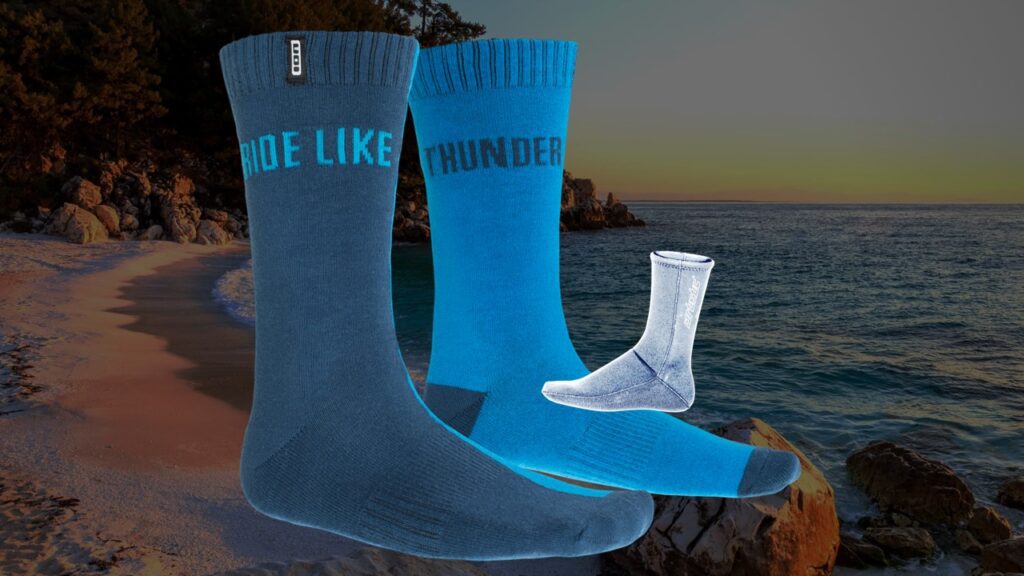
Benefits Of Wearing Socks With Water Shoes (Do You Wear Socks With Water Shoes)
While choosing the right water shoes and excellent water bottles are important for water sports, wearing socks with water shoes can also provide several benefits, including:
1. Improved Fit
Socks can help fill any gaps between the foot and the shoe, making the shoe fit better and providing more stability. After wearing your water shoes many times, the shoes may stretch and one of the best ways to make water shoes fit snugly is by wearing socks with them.
2. Increased Comfort
Socks can help absorb moisture and reduce friction, preventing blisters and reducing discomfort. Water socks can be worn for different water sports such as surfing, kayaking, fishing, swimming, diving, etc. to provide optimal comfort.
3. Better Hygiene
Wearing socks with water shoes can help keep feet dry and clean, reducing the risk of fungal and bacterial infections.
Neoprene socks are waterproof if water does not enter them from the top – they can keep your feet dry while you walk in the water. They also dry quickly and do not absorb much water.
4. Enhanced Protection
Socks can provide an additional layer of protection against cuts, scrapes, and other types of foot injuries.
While socks cannot be swapped for water shoes, wearing them can prevent your skin from rubbing against your water shoes as well as debris, grit and sand that enters the water shoes.
5. Insulation And Temperature Regulation
In colder environments, socks offer thermal insulation, helping to keep the feet warm by trapping body heat.
They create a layer of air between the foot and the shoe, acting as an extra insulating barrier. Additionally, moisture-wicking socks can help regulate foot temperature by efficiently managing sweat and preventing excessive heat buildup.
RELATED: How To Clean Water Shoes The Right Way
Disadvantages Of Wearing Socks With Water Shoes
While there are some advantages to wearing socks with water shoes, there are also several disadvantages that should be considered. Here are some of the disadvantages of wearing socks with water shoes:
1. Reduced Sensitivity
Wearing socks with water shoes can reduce the level of sensitivity and tactile feedback between the feet and the water surface.
The socks can act as a barrier, reducing the direct contact between the feet and the water, potentially reducing sensitivity and the ability to feel the water. After all, you are in the water to have the feel of water and have fun.
2. Increased Sweat
Wearing socks with water shoes can trap moisture and increase sweating, leading to discomfort and potentially causing fungal or bacterial infections.
When feet sweat, the socks can absorb the moisture and retain it, causing the feet to feel damp and potentially leading to discomfort.
Additionally, trapped moisture can create a warm and humid environment inside the water shoes, which can increase the amount of sweat produced by the feet and exacerbate the problem.
3. Slippage
Socks can cause the foot to slip inside the shoe, reducing the stability and support provided by the water shoe. When the feet sweat, the socks can become slippery, making it difficult for the feet to maintain a stable and secure grip inside the water shoes.
This can lead to reduced stability and support, making it more difficult to maintain balance and stability in wet and slippery conditions.
4. Difficulty Drying
Socks can make it more difficult for water shoes to dry completely, potentially leading to a bad odor or increased risk of fungal or bacterial growth.
5. Reduced Breathability
Socks can reduce the breathability of the water shoes, leading to increased sweating and decreased comfort. Socks can act as a barrier, blocking the flow of air between the feet and the water shoes.
This can trap heat and moisture inside the shoes, causing the feet to sweat and become uncomfortable.
Additionally, the reduced breathability of the water shoes can make it more difficult for them to dry, potentially leading to a bad odor and an increased risk of fungal or bacterial growth.
Because of these potential problems, it is important to weigh the advantages and disadvantages of wearing socks with water shoes before deciding whether or not to do so.
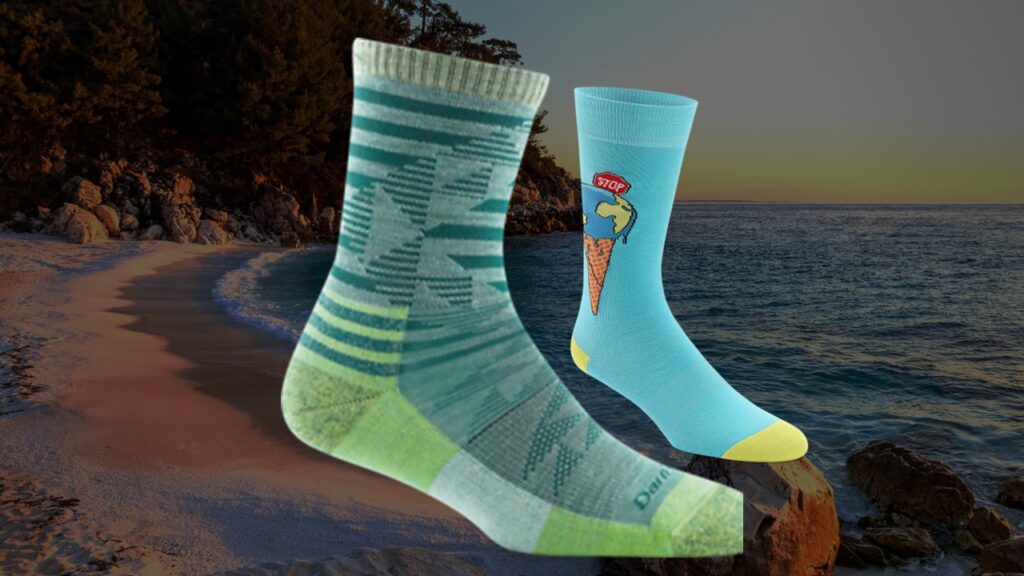
Types Of Socks To Wear With Water Shoes
When it comes to socks, there are a few things you need to take into consideration. The type of socks you wear can significantly impact the overall comfort of your feet, especially if you plan on being active in your water shoes.
RELATED: Can You Wear Water Shoes At Great Wolf Lodge
There are several types of socks that are suitable for wearing with water shoes, including:
- Quick-drying socks: These socks are made from synthetic materials that wick moisture away from the feet and dry quickly, keeping feet dry and comfortable.
- Thin and lightweight socks: Thin and lightweight socks are ideal for wearing with water shoes, as they provide minimal coverage while still offering protection and insulation.
- Aqua socks: Aqua socks are designed specifically for use in water and are often made from a stretchy, neoprene material that provides a snug fit and protects feet from cuts and scrapes.
- Anti-slip socks: These socks have a non-slip coating on the sole, which helps to prevent slipping and sliding inside the water shoes.
- UV-protective socks: UV-protective socks are designed to protect feet from the sun’s harmful rays, making them ideal for use in hot and sunny conditions.
Ultimately, the type of sock to wear with water shoes will depend on personal preference and the intended use of the shoes.
RELATED: How To Get The Smell Out Of Water Shoes Instantly
The Best Socks To Wear With Water Shoes
- Swimming: Look for water socks with a comfortable fit and superior drainage. They should have a neoprene or neoprene-like material that helps to prevent slipping and keeps feet warm. Here are some of the best swimming socks.
- Snorkeling: Look for water socks with a thicker sole for added protection from sharp rocks and coral. They should also provide superior drainage and ventilation to prevent water from pooling. Make sure the material is lightweight, breathable, and fast drying. Check the best snorkeling socks.
- Stand Up Paddle Boarding: Choose water socks with extra traction to help grip the board. For water sports that require stability and balance, anti-slip socks or aqua socks with a non-slip sole can help provide better traction and stability. Check out the best socks for stand up paddle boarding.
- Kayaking: Choose water socks with a snug fit and neoprene material to protect feet from sudden impacts. They should also provide plenty of cushion and arch support to keep your feet comfortable. Check the best kayaking socks out.
- Wakeboarding: Choose water socks specifically designed for wakeboarding. These will have extra cushion and arch support for added shock absorption. Check out the best wakeboarding socks.
- Beach and water park activities: For activities that take place in hot and sunny conditions, UV-protective socks can help protect feet from the sun’s harmful rays. Here are the best beach socks.
- Surfing and bodyboarding: For water sports that involve heavy impact, such as surfing or bodyboarding, thicker and more durable socks can provide better protection and cushion. Check out the best surfing socks.
- Scuba diving: For scuba diving, it is best to wear thin and lightweight quick-drying socks to reduce the bulk inside the dive boots. Find the best socks for scuba diving.
It is important to note that these are general recommendations, and the best type of water sock will depend on personal preference, specific water activity, and environmental conditions.
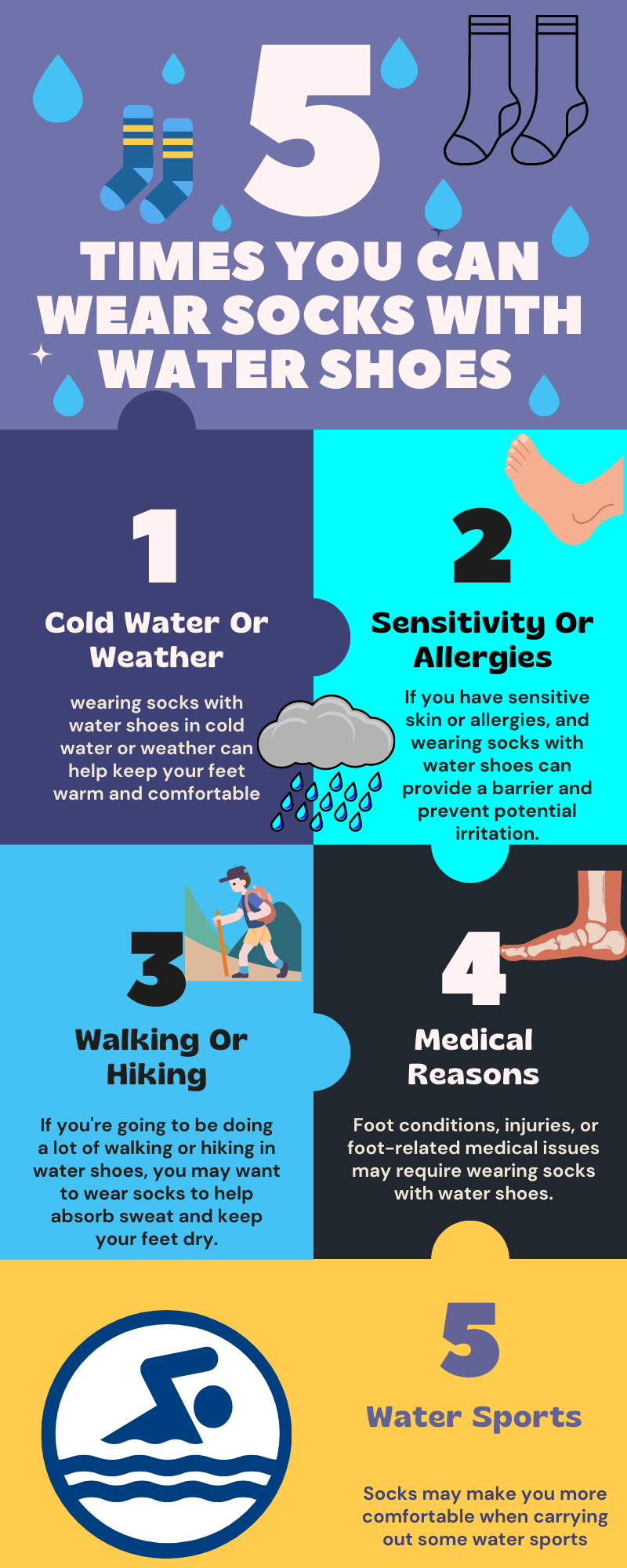
When Should You Wear Socks With Water Shoes
Wearing socks with water shoes is a matter of personal preference and depends on the specific circumstances and individual needs. Here are some situations when you might consider wearing socks with water shoes:
1. Cold Water or Weather: If you’re going to be in cold water or chilly weather, wearing socks with water shoes can help keep your feet warm and comfortable.
2. Sensitivity or Allergies: Some people have sensitive skin or allergies, and wearing socks with water shoes can provide a barrier and prevent potential irritation.
3. Hygiene: In certain communal water areas, like public pools or water parks, wearing socks with water shoes can add an extra layer of protection and hygiene.
4. Preventing Blisters: If you’re planning an activity that involves prolonged use of water shoes, such as kayaking or hiking in wet conditions, socks can help reduce friction and minimize the risk of blisters.
5. Water Sports: For certain water sports like paddleboarding or windsurfing, where you may be on the water for extended periods, socks can provide added comfort and protect your feet from rubbing against the shoe’s material.
6. Water Aerobics or Aqua Fitness: During water aerobics or other aquatic exercise classes, socks can offer additional support and grip on slippery surfaces.
7. Medical Reasons: Individuals with foot conditions, injuries, or foot-related medical issues might find wearing socks with water shoes beneficial for added support and protection.
On the other hand, some people prefer to wear water shoes without socks because the shoes are designed to be worn directly on the skin. Wearing socks might affect the fit and performance of the water shoes, and some water shoes have drainage systems that work best without socks.
Ultimately, it’s essential to consider the activity you’ll be engaging in, the environmental conditions, and your own comfort and health requirements when deciding whether to wear socks with water shoes. If you’re unsure, you can try both options and see which one feels more comfortable and suitable for your needs.
Common Misconceptions About Wearing Socks With Water Shoes
Many water sports enthusiasts believe that wearing socks with water shoes is beneficial because it creates a barrier between the foot and the shoe, preventing blisters and hot spots. However, this is not always the case.
While socks may help to prevent chafing in some cases, they can also make the feet more susceptible to blisters because they can hold moisture against the skin. Here are other misconceptions about wearing socks with water shoes:
- Socks will keep feet dry: Wearing socks with water shoes does not guarantee that feet will stay dry. In fact, socks can trap moisture and cause feet to sweat, leading to discomfort.
- Socks provide enough protection: Socks may provide some level of protection, but they may not be enough to protect feet from cuts, scrapes, and other injuries.
- Any socks will do: Not all socks are suitable for use with water shoes. Some socks may be too thick or slippery, reducing sensitivity and stability in the water.
- Socks are necessary: Wearing socks with water shoes is a personal preference and not a requirement. Some people prefer to wear water shoes without socks for maximum sensitivity and comfort.
- Socks improve comfort: While socks can provide additional comfort, they can also reduce the breathability of water shoes, leading to increased sweating and decreased comfort.
It is important to understand the benefits and drawbacks of wearing socks with water shoes and to choose socks that are suitable for the intended use and personal preferences.
Care And Maintenance Of Water Shoes And Socks
It is important to care for your water shoes and socks so that they last longer and perform better. Here are some tips on how to care for your water shoes and socks:
- Rinse with fresh water: After each use, rinse your water shoes and socks with fresh water to remove any dirt, sand, and salt. This will help extend their lifespan and prevent odors.
- Air dry: Avoid exposing your water shoes and socks to direct sunlight or high heat, as this can cause them to crack or fade. Instead, air-dry them in a well-ventilated area away from direct heat.
- Store properly: Store your water shoes and socks in a cool, dry place away from direct sunlight. Avoid storing them in near heat sources or damp areas, as this can promote the growth of mold and mildew.
- Clean as needed: If your water shoes or socks become heavily soiled, you can clean them using mild soap and water. Avoid using bleach or harsh chemicals, as these can damage the material.
- Inspect regularly: Regularly inspect your water shoes and socks for signs of wear and tear, such as fraying, holes, or worn-out soles. Replace them as needed to ensure they provide proper protection and support during your water activities.
Aqua Socks (Do You Wear Socks With Water Shoes)
Aqua socks are a type of footwear designed for water-based activities. They are typically made from a quick-drying material such as neoprene or mesh and have a non-slip sole to provide traction in wet conditions.
Aqua socks are designed to be lightweight, flexible, and comfortable, making them a popular choice for activities such as swimming, kayaking, paddleboarding, and beach volleyball.
Compared to traditional water shoes, aqua socks offer less protection for the feet and are typically more form-fitting.
It’s important to choose a pair of aqua socks that fit properly and provide adequate protection for your intended activity. Regularly inspecting your aqua socks for signs of wear and tear and replacing them as needed will help ensure they provide the best possible performance and protection.
Neoprene Water Socks (Do You Wear Socks With Water Shoes)
Neoprene water socks are a type of footwear designed for water activities. They are made from a neoprene material, which is a synthetic rubber that is water-resistant and provides good insulation.
Neoprene water socks are designed to be warm, comfortable, and provide good protection for the feet.
The neoprene material helps to keep feet warm in cold water and provides a barrier between the foot and any sharp or rough objects in the water. The non-slip sole provides good traction in wet conditions, making them suitable for activities such as kayaking, paddleboarding, and swimming.
It’s important to choose a pair of neoprene water socks that fit properly and provide adequate protection.
Can You Swim In Aqua Shoes (Do You Wear Socks With Water Shoes)
Yes, you can swim in aqua shoes. Aqua shoes are designed for water activities and are typically made from a quick-drying material that allows for easy movement in the water.
They are also designed to provide good traction on wet surfaces, making them suitable for activities such as swimming, snorkeling, and beach volleyball.
However, it’s important to keep in mind that aqua shoes are not the same as swim fins and do not provide the same level of propulsion and speed in the water.
Additionally, not all aqua shoes are created equal, so it’s important to choose a pair that is suitable for your specific needs and intended activity.
In general, if you plan on using aqua shoes for swimming, look for a pair that is lightweight, flexible, and provides good traction in the water.
Consider factors such as the type of water you’ll be swimming in (e.g. saltwater or freshwater), the temperature of the water, and any other requirements you may have (e.g. protection from sharp objects).
The Bottom Line On Do You Wear Socks With Water Shoes
So, Do You Wear Socks With Water Shoes? The choice to wear socks with water shoes is a personal preference. There are advantages and disadvantages to both wearing and not wearing socks with water shoes, and the best choice will depend on your specific needs and preferences.
Wearing socks can provide additional protection, warmth, and comfort, while not wearing socks can improve the fit of the water shoes and enhance the sensation of the water. Regardless of your choice, it’s essential to choose a pair of water socks that fit well and provide adequate protection.
